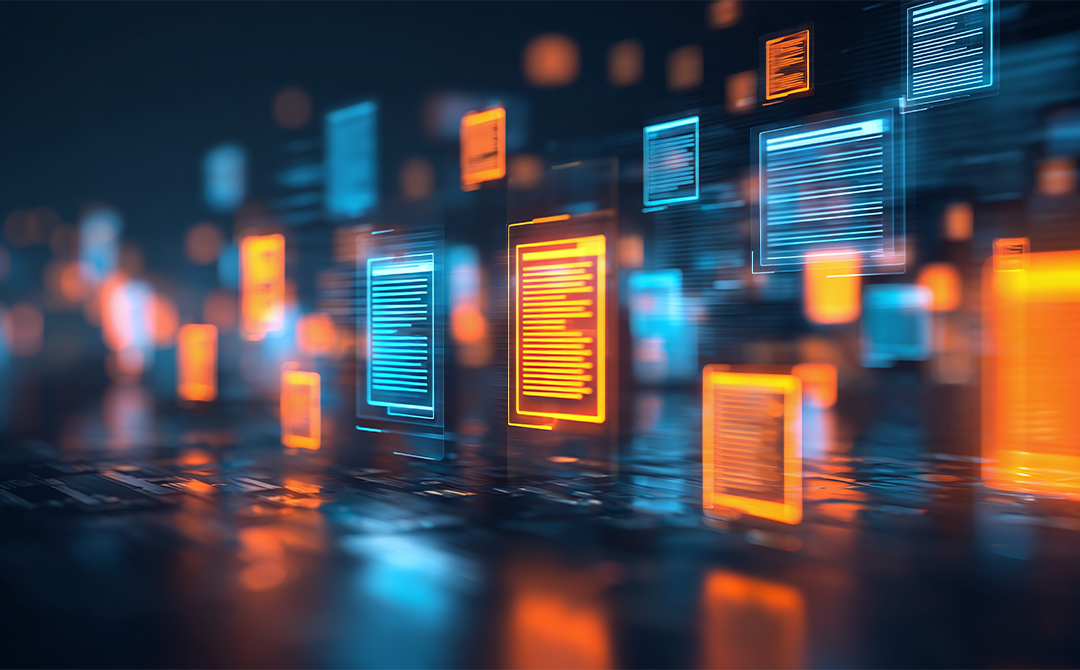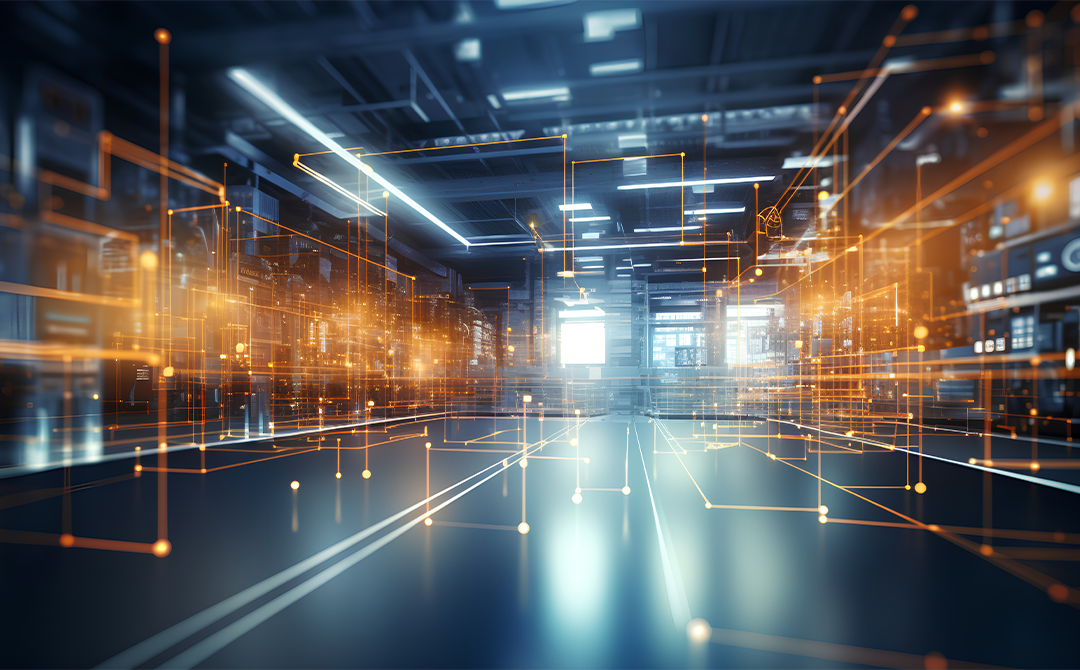
“What if your AI system could think, search, and solve - on its own?
It could proactively identify information gaps, retrieve data in real-time from diverse repositories, and refine responses through continuous feedback. This is what happens when you combine Agentic AI’s self-directed decision-making with Retrieval-Augmented Generation’s dynamic access to up-to-date knowledge sources.
By delivering precise, context-aware decisions, Agentic AI RAG overcomes the limitations of static data, creating problem solvers that can navigate uncertainty and execute complex tasks easily. And in this blog, we’ll delve into how this technology is powering next-generation applications that demand accuracy and autonomy.
Role Of RAG In Enhancing Agentic AI
One of the ways RAG supports this robust AI system is by providing access to external knowledge and allowing them to make more informed decisions. With reliable and updated information, RAG helps the agents generate contextual relevant responses. Not only that, it also:
Ensures contextual understanding and adaptability: Imagine an agentic AI system that not only delivers context-aware information in real-time, but also tailors its responses based on changing scenarios. RAG integration facilitates higher adaptability, making the agents more flexible and capable of handling evolving tasks.
Promotes efficient and intelligent data retrieval: RAG systems are designed to filter and retrieve only relevant information from a vast number of data sources, reducing inefficiencies. This targeted retrieval ensures AI agents access and use pertinent knowledge, improving overall task performance.
Fosters continuous learning and self-improvement: This technology can continuously update its knowledge bases by integrating new external data without the need for frequent retraining. This self-improvement process allows agents to refine their outputs over time, enhancing their problem-solving capabilities.
Agentic AI RAG vs Traditional RAG: Key Differences
AI agents integrated with RAG take data retrieval to the next level by acting autonomously and integrating information, whereas traditional RAG still remains reactive, responding only through predefined queries. But there’s more to their distinction:
|
Basis |
Agentic AI RAG |
Traditional RAG |
|
Core functionality |
Combines AI agents with RAG to determine retrieval strategies and dynamically synthesize responses |
Retrieves relevant information and generates responses from fixed data sources |
|
Flexibility |
Can dynamically adapt to new retrieval methods based on query context |
Limited to present retrieval sources and methods |
|
Adaptability |
Proactively adapts to changing contexts and improves overtime through continuous learning |
Reactive system that needs manual tuning for new contexts |
|
Scalability |
Modular, multi-agent architecture allows scaling across complex tasks with workflow adaptation |
Limited by static architecture that struggles with complexity and can handle only simple queries. |
|
Use cases |
Applicable to complex domains like healthcare, education, and business intelligence |
Suited for straightforward information retrieval tasks like basic FAQs and static knowledge queries. |
|
Decision-making |
Makes autonomous decisions on data selection and reasoning |
Follows fixed retrieval generation steps |
Challenges Of Integrating RAG With Agentic AI
Integrating RAG with agents unlocks several possibilities, from advanced reasoning to autonomous decision-making. But it also introduces some technical and ethical challenges:
- Query handling complexities: Agentic RAG systems excel at breaking down complex queries through multiple agents that each handle its own sub-tasks. However, when queries become more ambiguous, the agents will struggle to correctly interpret them, leading to inaccurate or incomplete responses.
- Tool integration problems: Integrating diverse tools like web search modules, Application Programming Interfaces (APIs), and vector databases with AI agents requires compatibility and seamless data flow between them. Setting up and maintaining these pipelines are a challenge, especially when the number of tools increases.
- Concerns regarding bias and fairness: Both Agentic AI and RAG systems risk amplifying biases in trained data or retrieved content. If agents only rely on biased sources or retrieval mechanisms, the generated outputs may reinforce stereotypes or unfair perspectives. Hence, tackling this challenge requires ongoing monitoring and dataset curation.
- Conflicting information resolution: Data integration with multiple sources brings out inconsistencies or contradictions. Users would have to employ sophisticated reasoning to validate, cross-reference, and reconcile conflicting information before retrieving data and generating a response.
- Data privacy and security issues: When integrated with agentic workflows, RAG workflows may inadvertently expose sensitive data if encryptions, access controls, and data sanitization measures aren’t properly enforced. A few security risks include unauthorized access or prompt injection attacks.
Benefits Of Agentic AI - RAG Integration
The market size for adoption of AI agents is projected to reach $52.62 billion by 2030 from $7.84 billion in 2025. Source Incorporate RAG into this technology and you’ve got a powerhouse technology that offers the following benefits:
Real-time, contextual decision-making
RAG systems with AI agents can process and act on live data, allowing agents to make decisions based on current and relevant information available. These systems evaluate the quality and relevance of retrieved information, adjusting workflows in real-time based on evolving user needs and contexts.
Let’s take the example of an autonomous car. It uses this technology to plan its route and make navigation decisions. With RAG integration, the car can fetch real-time traffic data, such as accidents or road closures, from external sources. Based on the information received, the agent immediately adapts, ensuring safe travel.
Advanced query understanding
Agentic RAG excels at breaking down complex, multi-layered queries into manageable sub-tasks, promoting multi-step reasoning and context-aware responses. It can refine its understanding, ask follow-up questions, and synthesize information from multiple sources. This approach produces more reliable and nuanced answers, especially in sectors requiring deep analysis or plenty of domain-specific knowledge.
For example, when a legal advisory assistant asks a complex legal question, the agents break down the query into sub-questions. Each sub-query is routed to appropriate retrieval pipelines such as recent court filings and internal legal databases. The results are synthesized into comprehensive, context-answers per the legal assistant’s requests.
Enhanced system architecture
Agentic AI RAG implements a modular, multi-agent architecture where agents can be assigned different sub-tasks. The architecture supports seamless integration with several databases and external tools, making it highly customizable and scalable across industries.
In a business intelligence setting, multiple specialized agents pull data from various business tools like CRM, sales, and support tickets. The agents interpret user intents and allow them to request custom reports in real-time.
Iterative feedback loop
Through iterative feedback, agentic AI RAG systems continuously refine outputs, identifying gaps in responses, initiating follow-up retrievals, and adjusting their reasoning until a satisfactory answer is found. This feedback loop is critical to enhancing accuracy and reducing logical mistakes, further improving the system through continuous learning. This benefit highlights the ability to learn from past outcomes, making this technology progressively smarter.
In customer service, agentic RAG systems evaluate the response and accuracy of initial answers provided to customers by support chatbots. If there are gaps or inaccuracies with the answer, the agent refines the answer after retrieving additional information from existing databases. This process continues until the answer is reliable and of high quality.
Real-World Applications Of Agentic AI RAG
The applications of this technology are slowly making their way into several industries. A recent 2025 Deloitte report predicts that 25% of companies that use Generative AI will launch agentic pilots or proofs of concept. And this number is projected to grow to 50% in 2027. Source Add RAG to the equation, and the possibilities are limitless for this up-and-coming technology. Here are some examples of real-world applications that large-scale companies are leveraging:
Intelligent customer support (Microsoft)
Enterprises sometimes face challenges in addressing customer queries quickly and effectively. Due to outdated information, AI chatbots struggle to provide correct answers, which is where this technology is used to retrieve up-to-date data from external sources, product documents, and FAQs.
Here, Microsoft integrated an AI-powered Agentic RAG solution with their Copilot AI assistant. The Copilot retrieves the latest available information from Microsoft’s user forums and documentation instead of relying on pre-trained responses, producing contextually relevant assistance to the customer. Source
Automated document processing (IBM Watson Discovery)
Companies face a significant challenge in manually processing large numbers of contracts, reports, and research documents. However, Agentic AI RAG automates the process through quick and efficient retrieval, summarization, and analysis of necessary documents.
IBM Watson Discovery leverages this technology to simplify document processing across healthcare and legal services. The smart agent chooses and prioritizes critical data, and gives specific advice. Through AI-powered document processing, document review is 50% faster, more accurate, and manual workloads are reduced for employees. Source
AI-powered enterprise search (Google Enterprise Search)
Large enterprises usually store unstructured data from emails, documents, and databases in an unorganized manner. As a result, employees take plenty of time to search for information they need.
To address the above challenge, Google built a RAG system powered by agents to improve the search solutions for large-scale companies. With the system, employees could ask questions in natural language form and get answers from internal and external sources in a matter of seconds. The key benefits from Google’s enterprise search offered were higher productivity of different teams, more precise search results, and 50% reduced time spent on looking for information. Source
How To Build Agentic AI Systems With RAG Integration
Moving from theory to practice, let’s break down the steps to designing an agentic AI RAG system that not only acts autonomously, but also scales effectively:
Step 1: Define objectives and use cases
The first step is to define the agentic RAG system’s goals and the use cases it’ll address. This sets the foundation for design decisions such as determining the necessary data sources and tools. It also ensures the system is tailored to your needs, enabling you to input the right user queries.
Step 2: Prepare and index data for retrieval
The next step is to prepare your system for data retrieval. Here, you aggregate relevant data from various sources like APIs and webpages, and preprocess them to ensure quality and relevance. Larger documents can be split into smaller chunks and converted into vector embeddings. And for efficient semantic search, the embeddings will be organized and stored into a knowledge base, such as a vector database, for better access and retrieval.
Step 3: Build the agentic architecture
Once the vector database is established, it's time to set up the architecture. You can start by developing an agent that can autonomously decide when to retrieve data from the vector database. It should also independently decide when to invoke external tools, and when to generate responses using LLMs (GPT-4, for example). This smooth orchestration allows the agent to make flexible, context-aware decisions.
Step 4: Implement retrieval and generation workflow
The next crucial step is bringing RAG into the picture. When the agent receives a user query, it determines if it can be answered using the existing knowledge base or requires external tools. If the query can be answered, the agent formulates a retrieval query to fetch relevant information from the vector database. This information is used to build context for the LLM, which synthesizes the retrieved information and generates a response.
However, if the vector database is insufficient, the agent could use a web search tool to find relevant external information. From there, it can rephrase the query to get more specific search results.
Step 5: Deploy, monitor, and iterate
Finally, after deploying the agentic RAG system in your environment, continuously monitor its performance and user interactions. You can further improve retrieval, agent decision policies, and response generation using feedback and new data. This ongoing refinement process enhances the system’s accuracy, autonomy, and adaptability over time. By integrating intelligent agents into the RAG pipeline, you create systems that can adapt to complex queries and provide contextually-rich responses.
Future Of Agentic AI RAG
While still in its early stages, this technology represents a significant leap forward in AI’s evolution. From streamlining research to enhancing customer support, the potential applications across various sectors, such as Agentic AI in Banking and Financial Services and healthcare, are immense. As LLMs and AI frameworks constantly evolve, this technology will become more powerful, enabling autonomous and efficient AI-driven workflows. And, here are some of the ways agentic RAG is set to advance:
- Future agentic RAG systems will seamlessly process text, images, audio, and video files for richer context-aware responses.
- For iterative refinement, agentic RAG will use self-correcting loops to evaluate outputs and refine queries until optimal results are achieved.
- Multi-agent systems may improve personalization by leveraging user-specific data such as preferences and past interactions to dynamically tailor responses.
- To ensure transparency, agentic RAG systems will audit their reasoning and citing sources, preventing biases and adhering to applicable guidelines.
Wrapping Up
The capabilities and potential of agentic AI RAG go beyond traditional analytics as agentic systems are being empowered to think, act, and adapt independently with maximum awareness and precision. And RAG plays a pivotal role here, bridging the gap between static knowledge and real-time intelligence. Integrate it with AI agents and you get a powerhouse system that can make informed, context-rich decisions without constant human intervention.
Successful integration of AI agents with RAG starts when your AI strategy aligns with your business objectives and broader automation goals. By partnering with AI-solution experts like Tredence, you can easily address AI challenges such as data security and workforce training, taking AI autonomy to the next level in your company.
Contact us today to know how we can help transform your decision-making capabilities from reactive to proactive.
FAQs
1] What types of data can Agentic AI RAG systems retrieve?
AI agents integrated with RAG can retrieve a wide variety of data types, such as unstructured text from vector search engines, real-time information through web searches, numerical data via calculators, and specialized information from multiple APIs.
2] When do agentic AI systems require RAG integration?
These systems require RAG integration when they need to access up-to-date, domain-specific, and contextual information beyond their static training data to make informed decisions, execute goal-driven tasks, and deliver accurate, real-time responses.
3] How does RAG enhance collaboration between multiple agentic AIs?
RAG enhances collaboration between agents by enabling them to access and share relevant, up-to-date, information from external knowledge bases in real time. This improves the accuracy, context-awareness, and reliability of their responses while fostering trust through source transparency.

AUTHOR - FOLLOW
Editorial Team
Tredence
Next Topic
Agentic AI Trends in Telecom: Transforming Networks into Autonomous Decision-Making Systems
Next Topic




